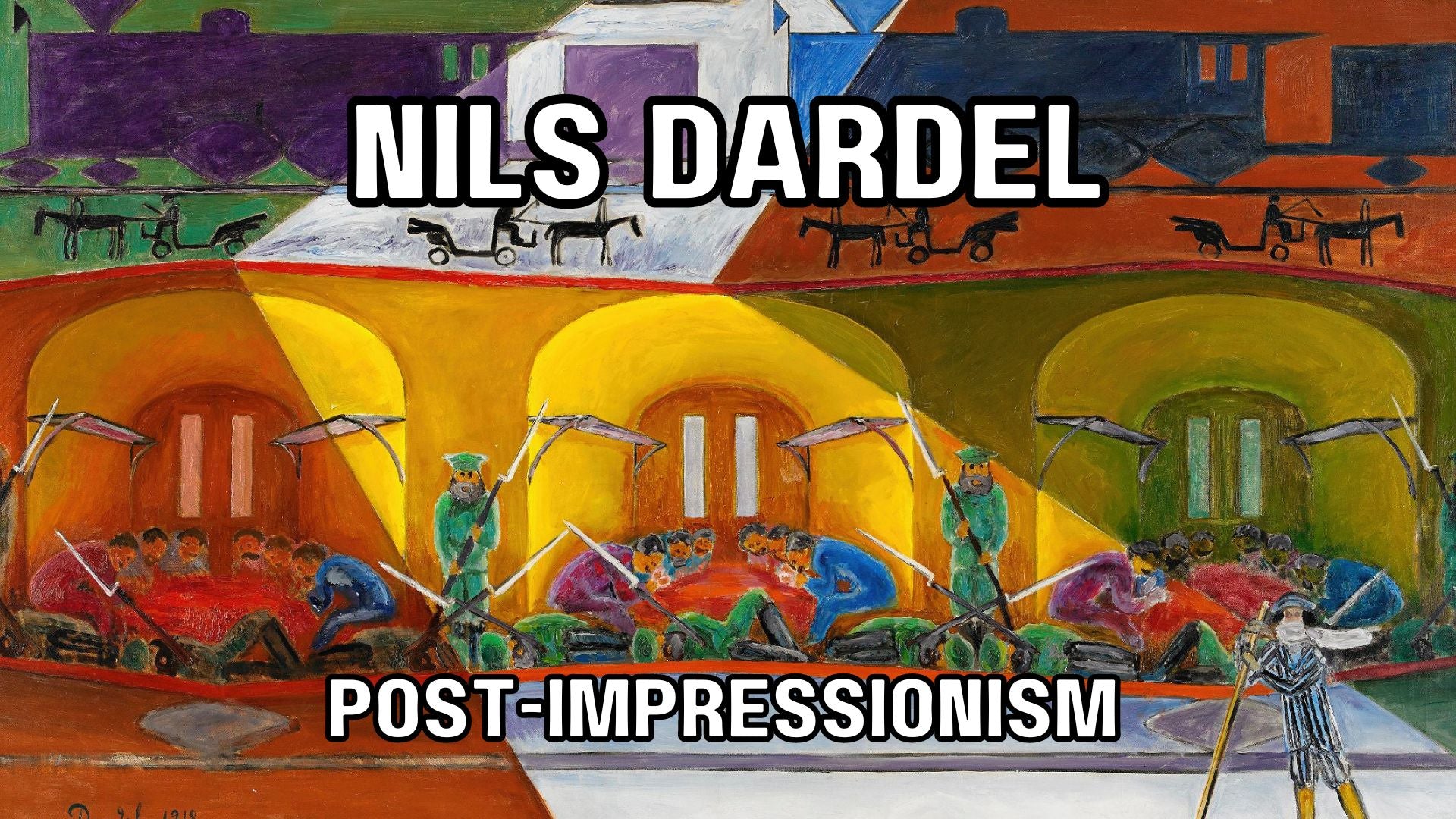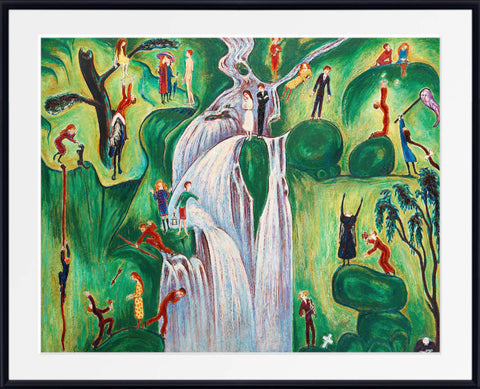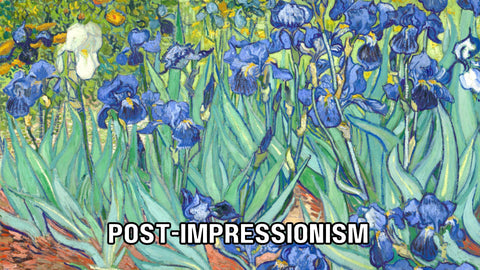Table of Contents:[hide]
Nils Dardel, a name not unfamiliar to the art world, stands as a significant figure in 20th-century Swedish Post-Impressionism. His journey through life, marked by travels, relationships, and artistic endeavors, unveils layers of complexity that enrich our understanding of his work and legacy.
Biography
Born Nils Elias Kristofer von Dardel in Bettna, Södermanland, Sweden, in 1888, he inherited a rich artistic heritage as the grandson of the renowned Swedish painter Fritz von Dardel. His early years were shaped by academic pursuit at the Royal Swedish Academy of Arts in Stockholm, where he honed his skills and laid the foundation for his artistic career.
Family Life
Dardel's familial connections, particularly to his grandfather Fritz von Dardel, provided not only a lineage of artistic talent but also a sense of heritage and tradition. Despite facing familial disapproval in his romantic pursuits, notably his proposal to Nita Wallenberg, Dardel's personal life intertwined intricately with his artistic expressions.
Parisian Influence
Like many artists of his time, Dardel found inspiration in the vibrant atmosphere of Paris during the early 20th century. Immersed in the artistic milieu of the city, he absorbed influences from movements such as Fauvism and Post-Impressionism, as well as the aesthetics of Japanese woodcuts. His exploration of different styles, including a brief flirtation with Cubism, reflects the dynamism of his artistic journey.
Post-Impressionist Exploration
Dardel's artistic exploration led him to delve into Pointillism, characterized by vibrant colors and clear motifs. Works such as "Begravning i Senlis" (Funeral in Senlis) exemplify his mastery of this style, showcasing his ability to capture both emotion and atmosphere with precision.
Ballets Suédois and Stage Design
Dardel's collaboration with Rolf de Maré and the Ballets Suédois marked a significant chapter in his career. His contributions to stage design, characterized by a fusion of artistic elements and theatricality, underscored his versatility as an artist. Pieces like "Crime passionnel" (Crime of Passion) exemplify his ability to translate narrative and emotion onto canvas.
Legacy
While not fully appreciated during his lifetime, Dardel's legacy has endured, with his works displayed in prestigious museums and galleries worldwide. His impact on Swedish art, particularly during the tumultuous period of World War II, solidified his position as a seminal figure in the country's artistic landscape.
Nils Dardel Prints and Canvas Panels
Prints and ready to hang canvas panels of Nils Dardel's paintings are available in a range of sizes with fast worldwide delivery.
Nils Dardel FAQ's
-
Who was Nils Dardel?
- Nils Dardel was a prominent Swedish Post-Impressionist painter born in Bettna, Södermanland, Sweden, in 1888. He was known for his vibrant and emotionally charged works.
-
What were some of Nils Dardel's famous paintings?
- Some of his most renowned works include "Den döende dandyn" (The Dying Dandy), "Svarta Diana" (Black Diana), and "John Blund."
-
What influenced Nils Dardel's artistic style?
- Dardel drew inspiration from various sources, including the Fauvist movement, Post-Impressionism, and Japanese woodcuts. His time in Paris, particularly his interactions with artists like Henri Matisse, greatly influenced his style.
-
Did Nils Dardel engage in other artistic endeavors besides painting?
- Yes, Dardel was also involved in stage design, particularly for the Ballets Suédois in Paris. His collaboration with Rolf de Maré resulted in innovative and visually striking stage sets.
-
What themes did Nils Dardel explore in his artwork?
- Dardel primarily focused on portraiture and depictions of human figures. His works often delved into themes of emotion, identity, and societal commentary.
-
Was Nils Dardel recognized during his lifetime?
- While not extensively appreciated during his lifetime, Dardel gained recognition posthumously, especially during World War II when his retrospective at Liljevalchs konsthall coincided with the outbreak of the war.
-
Where can I see Nils Dardel's artwork today?
- Dardel's works are displayed in several museums and galleries worldwide, including the Nationalmuseum, Göteborgs konstmuseum, and Malmö konstmuseum in Sweden, as well as the Nasjonalgalleriet in Norway.
-
What was the significance of Dardel's relationship with the Ballets Suédois?
- His collaboration with Rolf de Maré and the Ballets Suédois allowed Dardel to expand his artistic horizons beyond painting. His involvement in stage design marked a significant departure from traditional artistic practices.
-
Did Nils Dardel's personal life influence his artwork?
- Yes, aspects of Dardel's personal life, including his relationships and travels, often found expression in his artwork. Themes of love, rejection, and existentialism permeate many of his pieces.
-
What is Nils Dardel's legacy in the art world?
- Nils Dardel is remembered as a pioneering figure in Swedish art, whose innovative approach to color and form continues to inspire artists today. His contributions to Post-Impressionism and stage design have left an indelible mark on the art world.
Related Articles
Post-Impressionism






